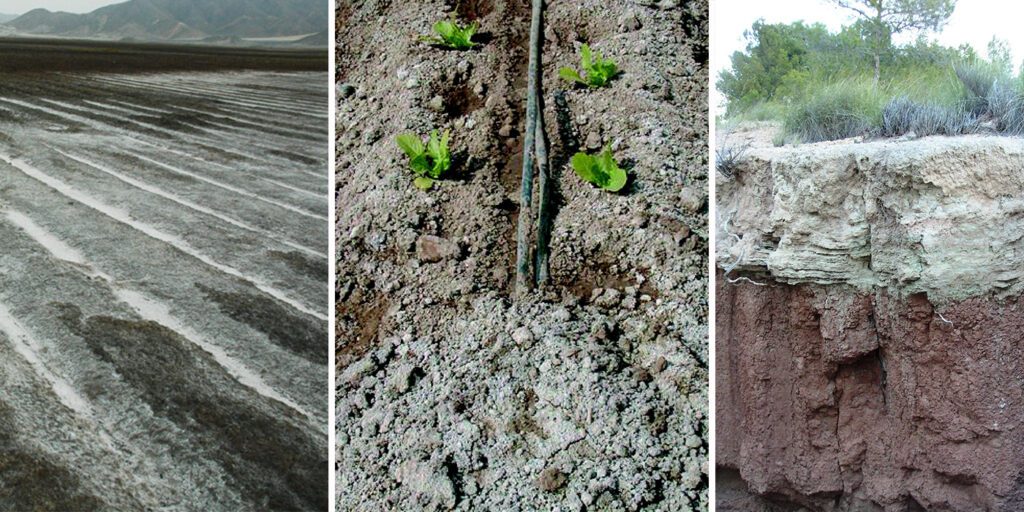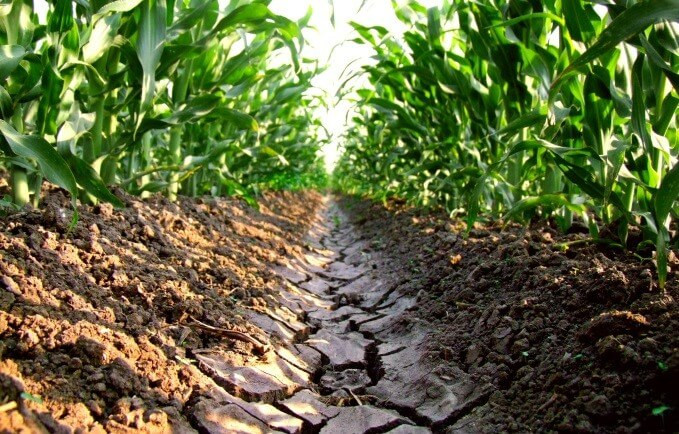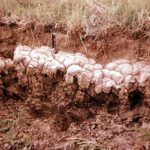
The following table shows the damage caused by salinity and sodicity in different areas of agriculture:
| Salinity | Sodicity |
|---|---|
| Environmental Effects: Salinity processes due to the water table can take place in arid and semi-arid environments (imbalance in the hydric regime). Salts generally tend to accumulate in bottom topographical positions with poor drainage where they have been carried by surface or subsurface runoff water. | Environmental Effects: Displacement and reduction of the soil microbiome due to toxicity at high concentrations of sodium. Predominance of halophytic species. |
| Effects on soil properties: Physical: at non-toxic levels for the plant, the high concentration of salts in the soil solution (sodium and magnesium chlorides and sulfates) has a favorable physical effect on soils that favors the flocculation process and thus improves permeability. This translates into good physical fertility of saline soils. Chemical: In a saline soil, the high concentration of Na+ and Cl- ions interferes with the absorption of nutrients (K+, Ca2+, NO3-) and prevents their uptake, which can reach toxic levels for cell metabolism. it also raises the osmotic component of the soil water potential. The result is less availability of water for plants. It depends on the plants. | Effects on soil properties: Physical: Sodicity leads to an expanded electrical double layer. The expansion of the double layer, due to the effects of valence and high hydrated radius of the Na+ ion, produces dispersion and there is no formation of aggregates. As no structure is generated (lack of porosity) the movement of water in this type of soil is very slow and the hydraulic conductivity is very low. On the surface, if there is the presence of moderately fine to fine textures, a laminar-type structure with strong crusting is generated, making it difficult for the crop to emerge. Chemical: In the soil solution there is a high concentration of sodium salts capable of undergoing alkaline hydrolysis, of the sodium carbonate and bicarbonate type. These highly soluble salts produce increases in soil pH to values equal to or greater than 8.5 (strongly alkaline soils), which severely hinders the availability of most nutrients as well as biological activity. Sodic soils usually have “black crusts” on their surface, which are sodium humates produced by the union of colloidal organic matter with the sodium present. These black crusts are easily identified on the soil surface, allowing the sodicity problem to be recognized at a glance. |
| Effects on the crop: The effects on the crops depend both on the tolerance of each species and cultivar, as well as on its stage of development. The accumulation of salts more soluble than gypsum in the seedbed can cause a delay or inhibition in emergence, a smaller size of the plant, necrosis in the leaves, decreased yields and the death of the plant before completing the cycle. This could be due to osmotic effects that hinder water absorption (physiological drought) and to ion-specific effects that cause different toxicities. The increase in the saline content of the soil produces a delay and decrease in the rates of germination, emergence and initial growth, and can even cause the death of the seedlings. Inhibition of endogenous plant auxins. Increased production of abscisic acid and ethylene by the plant. | Effects on the crop: The lack of soil structure reduces the availability of oxygen and oxygenation capacity in the root zone, limiting plant growth. The hard crust that is generated when these soils dry out hinders the germination process (Figure 8) and prevents normal root growth. On the other hand, the increase in pH affects the availability of certain essential nutrients. The difficulty of water passing through deflocculation or sodium humate crusts causes water stress in the plant. Na ions inhibit the assimilation of K ions, which will be expressed in the crop as a higher K deficiency, lowering the enzymatic activity of the plant and protein synthesis. |
Management of saline and sodic soils:
One of the most used strategies for the management of saline, sodic and saline-sodic soils is the application of amendments to improve the soil and displace Exchangeable Sodium.

These amendments are rich in Calcium and Sulfur, such as Calcium Sulfate, commonly known as Agricultural Gypsum, where through a chemical reaction in the soil, Calcium displaces Sodium and the oxidation of Sulfur generates a decrease in pH. However, the incorrect application of these amendments could generate excess Calcium in the soil, which would lead to a decrease in the assimilation of other nutrients or to have toxic effects on plants due to the excess of this element.
A more recent strategy in the management of saline and sodic soils is the application of substances known as Thiosulfates, whether they are ammonium and/or Potassium thiosulfates. Thiosulfates in the soil have a strongly acid reaction, producing sulfuric acid (H2SO4), which, in a first stage, acts by lowering the pH of the soil, this strong acidification makes Calcium soluble (generally present in the soil) and this In turn, it displaces the Exchangeable Sodium, decreasing its concentration after irrigation and the problems that it entails.

Potassium thiosulfates, in addition to producing sulfuric acid (H2SO4), with the chemical reaction described above, also produce Potassium Sulfate, which provides acidity and Potassium, a very important element for plant growth and whose assimilation is inhibited under conditions of sodicity in the soil.
SaltAway is a product made from carboxylic acids and highly acid reaction sources, which “bomb” Sodium and salts in general from the soil, displacing them, in addition to lowering the pH of the rhizosphere to allow the activation of Calcium found naturally in the soil and thus reducing salinity and sodicity problems.
 AgronoBlog – Agriculture Blog
AgronoBlog – Agriculture Blog 


